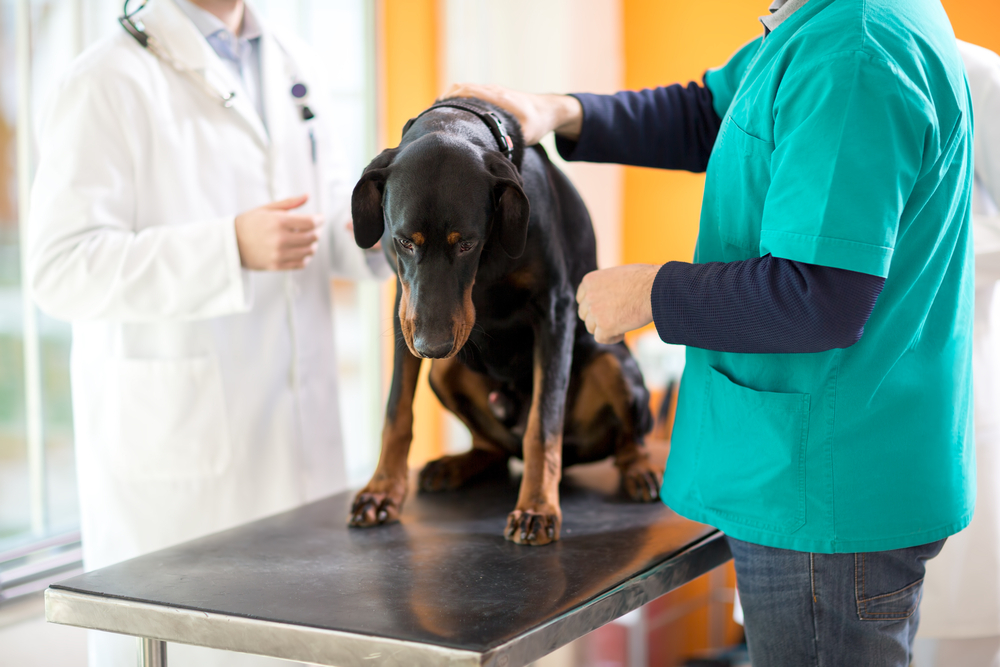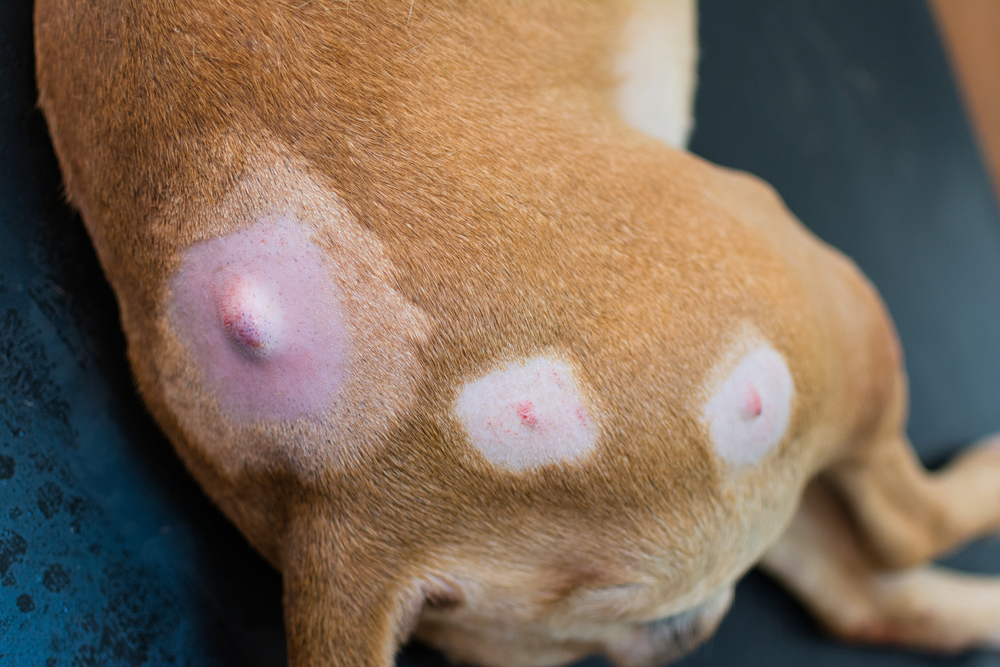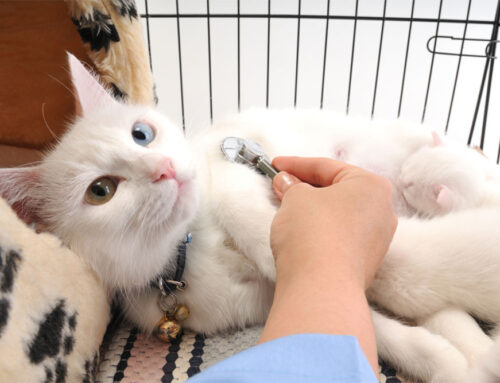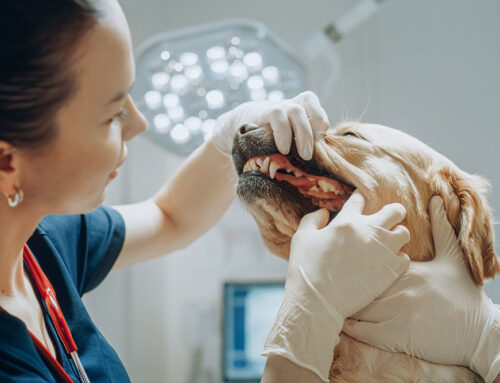Lumps and Bumps: Knowing When to Act for Your Valley Center Pet
Bath time, brushing, or even a trip to the groomer often reveals surprises under the coat. A new swelling or lump can stop you in your tracks, leaving you torn between brushing it off and fearing the worst.
The truth is, most growths are not life-threatening, but some are. Infections, inflammatory reactions, or cancerous changes can all show up first as a simple bump. At Valley Center Veterinary Clinic, we use Fear Free handling, advanced diagnostics, and transparent communication to separate the harmless from the urgent, so you know when it’s safe to watch and when it’s time for action.
Why Do Pets Get Lumps?
Skin is made up of multiple layers containing fat, glands, follicles, and immune cells. Any one of these structures can react to injury, infection, or abnormal cell growth by producing a swelling. Common types include:
- Injury or infection after bites, scratches, or punctures
- Allergic reactions to food, medication, or stings
- Benign growths such as fatty tumors or warts
- Malignant tumors that invade or spread elsewhere
Could It Be Cancer?
Cancer accounts for nearly one-third of pet skin tumors. Malignant tumors are dangerous because they spread to other tissues, unlike benign lumps which typically stay localized.
The Veterinary Cancer Society provides trusted resources for families facing a diagnosis. Examples of common serious cancers include:
- Squamous Cell Carcinoma: crusty, ulcerated lesions often on ears, nose, or mouth in cats
- Osteosarcoma: painful bony swellings, most common in large dogs
- Oral Tumors: bleeding masses in the mouth that interfere with eating
Why Testing Is Essential
It’s important to remember that no veterinarian or pet owner can confirm what a lump truly is just by looking at it or feeling it. A fatty tumor, an abscess, or an aggressive cancer can all feel similar under the skin. Only diagnostic tools such as fine-needle aspiration, biopsy, or histopathology provide a definitive answer. Even if a mass seems harmless, getting it tested is the only way to know for sure and to choose the right treatment plan for your pet’s long-term health.
Everyday Masses That Often Look Scarier Than They Are
Lipomas
Fatty tumors are soft, round, and movable beneath the skin. Lipomas are usually harmless but should be measured regularly and removed if they interfere with mobility. They can get quite large!
Warts
Puppies or immune-compromised dogs can develop cauliflower-like growths in their mouths. These oral papillomas usually resolve on their own, but an exam helps confirm the diagnosis and prevent spread to other dogs.
Calluses and Hygromas
Hard floor surfaces create pressure points on large-breed dogs. Thick elbow calluses and hygromas, which are fluid-filled swellings over bony areas, can both improve with padded bedding, soft surfaces, and healthy weight management.
Lumps That Should Be Treated as Emergencies
Abscesses
A bite wound can seal over, trapping bacteria and producing a hot, painful swelling that may rupture. Cat abscesses usually require surgical drainage and antibiotics.
Ear Hematomas
Head shaking or ear infections can rupture blood vessels inside the ear flap, creating a balloon-like swelling. Painful ear hematomas need veterinary care to prevent permanent scarring.
Anal Sac Swellings
Scooting, a strong odor, or a marble-like bulge beside the anus often means infection, impaction, or tumor. Cornell’s guide to anal sac disease explains why early intervention is essential. These are usually painful and can actually rupture- not a pleasant situation for your pet or the smell in your home.
Foxtails
Foxtail awns are more than just a nuisance weed. Foxtails are common in California and can burrow under a pet’s skin, creating painful lumps that migrate as the seed travels. Left untreated, these barbed seeds can trigger infections, abscesses, or even work their way into deeper tissues. Any sudden swelling after outdoor activity should be evaluated quickly to rule out foxtail exposure.
Hernias
A bulge near the abdomen, chest, or groin may indicate a hernia. Some remain stable, but others can trap tissue or organs and require emergency surgery.
Lumps to Keep a Close Eye On
Ticks
A small gray lump may be an engorged tick rather than a true mass. Tick prevention tips from the CDC are key, especially for pets that hike North County trails.
Severe Allergic Welts
Stings, medications, or new foods can unleash an immune storm. Dogs covered in itchy hives may progress to facial swelling or airway compromise.
How We Diagnose a Mass
At Valley Center Veterinary Clinic, our AAHA accreditation means we follow the highest standards of safety and accuracy. Diagnosis begins with a Fear Free exam, where our team uses calm handling and treats to keep your pet comfortable while we assess each lump. If needed, we perform a fine-needle aspirate and review the sample with rapid in-clinic cytology to provide same-day answers.
When additional detail is required, we rely on our advanced diagnostic suite for digital X-rays and ultrasound imaging. These tools help us see how deep a mass extends and whether surrounding tissue is involved. For suspicious or inconclusive cases, a biopsy with histopathology provides definitive results. If removal is recommended, our skilled surgical team is equipped to perform procedures safely in our surgery center, ensuring your pet gets the best chance at recovery.
Emergency Red Flags
Call our emergency team immediately if you notice:
- A lump doubling in size within 30 days
- Ulceration, bleeding, or foul-smelling discharge
- Severe pain, heat, or swelling that spreads beyond the lump
- Any mass that interferes with breathing, eating, or walking
- Collapse, pale gums, or sudden lethargy linked to a lump
During regular business hours, we ask that you call ahead so our staff can prepare for your arrival. Same-day appointments are often available, and you can reach us by phone, text, or email. For emergencies outside normal hours, we will direct you to a trusted specialty or emergency hospital to ensure your pet receives immediate attention.
At-Home Lump Check Routine
A simple monthly check at home can make a big difference. During a relaxed cuddle, run your hands slowly from nose to tail to feel for new bumps. If you find one, snap a photo next to a ruler and jot down the date so you can track its size and texture over time. Re-check every couple of weeks and share your notes during wellness visits. This partnership helps us decide whether a lump is safe to watch or requires immediate testing.
Older pets should be scheduled for regular senior wellness exams to catch changes early. Oral health matters too: routine dental care finds hidden swellings in the mouth that can be painful or cancerous.
Your Partner in Pet Lumps, Bumps, Growths, and Masses
Every lump tells a story, but only testing can reveal whether it’s harmless or dangerous. With AAHA-accredited standards, a Cat Friendly approach, and a full range of diagnostic and surgical services, Valley Center Veterinary Clinic ensures your pet gets the safest, most compassionate care possible.
If you’ve found a new bump or a familiar one is changing, don’t wait and worry. Call us at 442-207-4720. Together, we’ll bring clarity, peace of mind, and a plan to keep your pet comfortable for years to come.








Leave A Comment